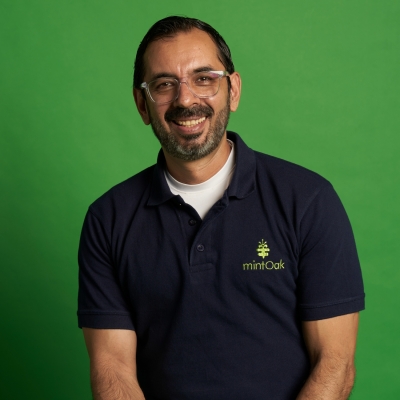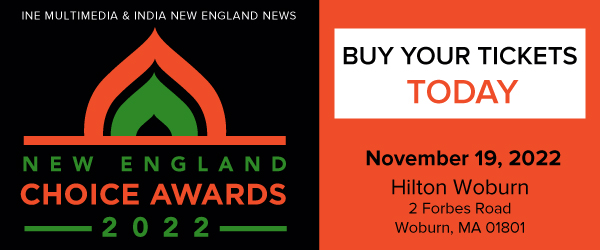Fintech platform Mintoak which enables banks to digitally strengthen the merchant ecosystem


New Delhi- India’s fintech market is expected to reach $1 trillion by 2030, from $31 billion in 2021, according to Chief Economic Advisor Dr V. Anantha Nageswaran. As the fintech industry aims to reach new horizons, Mintoak, a homegrown embedded fintech platform, enables banks to digitally empower their merchant ecosystem by powering digital payments and financial services.
Mintoak has built a modularized, cloud-based, API-first payments platform-as-a-service (PaaS) that allows its banking partners to deploy and rapidly scale value-added services (payments, lending, engagement) to their tens of millions of SME customers.
Raman Khanduja, CEO and co-founder of Mintoak, told IANS that with the help of the next-generation AWS Cloud, the company aims to connect banks with the entire base of SME merchants by transforming merchants’ mobile phones as the medium to accept all forms of payment and deliver a complete stack of trade enablement solution in an integrated manner.
Here are excerpts from an interview:
Q: What is Mintoak’s approach to disrupting the payments and commerce ecosystem for MSMEs in India?
A: Mintoak is an India-based embedded FinTech company that enables banks to digitally empower their merchant ecosystem by powering digital payments and financial services.
Our approach to empowering merchant ecosystems stems from prevailing issues facing business owners today.
In India, every merchant has multiple QR codes on their storefront to accept digital payments. While the rise of digital is meant to simplify operations for businesses, from some first-hand experiences with retail business owners, we have also seen them using offline methods to manage the reconciliation of payments from different payment apps.
Mintoak empowers banks to leverage the acceptance of digital payments as the foundational layer of modern commerce. The same payment railways operate relevant value-added services to assist the MSMEs with effective customer relationship management capabilities.
We leverage a 3E approach to achieve the goal of empowering the merchant ecosystem: Engage: Build engagement by creating a seamless digital payment infrastructure for business owners, Engage: While we’ve set up the payment operations, it’s critical to support business operations – consumer feedback, promotional communications, campaign management and loyalty programs and Elevate: Deep engagement and digital footprints, allow banking partners to provide seamless access to credit and financial services.
Q: How does Mintoak offer its services and who are your key customers?
A: Our goal is to connect banks with the entire base of SMB merchants by transforming merchants’ mobile phones as the medium to accept all forms of payments and deliver a complete stack of merchant enablement solutions in an integrated manner.
The core of Mintoak consists of a robust omnichannel payment platform that accepts all forms of traditional and new-age payments. The seller only needs one platform to accept both near and far payments such as card, QR, UPI and SMS/link based payments. The platform offers a single view across all forms of payment and takes care of reconciliation work seamlessly in real time.
The platform currently serves over one million merchants across leading banks in India and Africa and is already demonstrating consolidation of payments along with improved financial access, including improvement in activation rates and improvement in overall payment throughput and higher merchant engagement scores.
While Mintoak offers a comprehensive platform for sellers; it also offers its banking partners the unique flexibility to identify and deploy only the modules relevant to their business strategy through its modular architecture and then expand their ecosystem by leveraging Mintoak’s suite of products.
HDFC Bank, State Bank of India and YES Bank are some of the leading banking partners in India along with Burgan Bank and Absa Bank, among a few others globally.
Q: What is Mintoak’s overall understanding of the MSME market in India and what are your future plans?
A: In the first two months of the 2020 shutdown, around 600,000 Kirana stores in India are estimated to have closed. As a result of the pandemic, businesses and supply networks were severely disrupted and this compounded with the hurdles faced by the Indian and global economy, the rise in prices of raw materials, global trade disruptions, etc., had a pervasive effect on the recovery of the Indian MSME community.
Digitization is the key to revival. While digital payments are being tackled by more FinTechs and banking partners, accelerating access to credit for MSMEs is key.
Almost 85 percent of Indian MSMEs remain underserved in terms of credit. They contribute to over 30 per cent of the country’s GDP, but must still be made a significant part of the formal lending ecosystem.
While credit is essential for the economy to grow, banks are most beneficial in meeting the credit needs of businesses. They now enable merchants to accept digital payments seamlessly and gradually enable credit limits at scale. This not only allows business expansion but also helps in achieving greater financial inclusion in the MSME sector.
Some small and micro businesses continue to prefer cash-based transactions over digital payments. We believe that among some of the most important factors to onboard such under-penetrated merchant segments is rapid deployment of affordable QR codes and engagement through integrated POS solutions.
Rapid rollout of low-cost QR codes and integration with point-of-sale solutions is essential to enter such under-penetrated merchant groups, say analysts at Deloitte. With over 40 percent of the world’s digital transactions taking place in India at nearly 2,200 transactions per second, UPI has definitely been India’s case study for the global payments ecosystem. The offline segment is expected to account for approximately 75 percent of all digital merchant payments, mainly due to an increase in QR-based POS payments.
Q: Who are the co-founders? Can you share any company achievements so far?
A: Rama Tadepalli, CPO and co-founder, has around 21 years of professional experience from various industries such as retail, telecom, banking, cards and online grocery. Rama has held leadership positions with revenue responsibility and was head of products and innovation for Visa India and South Asia. Rama holds a Masters in International Business from the Indian Institute of Foreign Trade, Delhi and is also a Post Graduate in Mathematics from Delhi University.
Sanjay Nazareth, COO and co-founder, has over 19 years of experience in payments across various organizations. Before embarking on his entrepreneurial adventure, Sanjay was Head of Customer Support and Services for Visa India and South Asia. He was instrumental in setting up the Rupay brand. Prior to his NPCI stint, Sanjay was Head of Direct Banking at HDFC Bank. He is a commerce graduate from Mumbai University.
Kabeer Jain, CTO and co-founder, has over 12 years of experience in financial services, internet startups and gaming. Kabeer has founded 2 gaming companies and has experience from roles across product, digital marketing and development. Prior to joining Mintoak, Kabeer was AVP Product at Docprime, a Policybazaar group company. Kabeer holds a bachelor’s degree from the Indian Institute of Technology, Delhi.
Rohit Ramana, CFO and co-founder, has over 15 years driving business performance and strategic roadmap, executing strategic financial solutions for a wide range of companies as an investment banker across M&A, capital raising and restructuring and developing technology solutions. He is an alumnus of Indian Institute of Management Calcutta and Indian Institute of Technology Kharagpur.
Mintoak has already started deploying the platform via exclusive partnerships with India’s two largest acquiring banks – HDFC Bank and SBI in one of the world’s most dynamic and fast-growing payments markets, India, as well as engaging with leading banks across the Middle East, Africa and Southeast Asia.
Q: How did cloud technology enable you to do what you couldn’t before?
A: We started with AWS to compare before and after. We switched to using AWS managed services for some of the tools we used on servers like Redis and RabbitMQ, and that allowed us to achieve horizontal scalability, high availability and observability with almost zero overhead.
We use AWS features extensively to constantly optimize our stack from both a performance and cost perspective.
Q. What are the main business benefits you have gained from this association?
A: Being on the cloud has allowed us to build and deploy as well as scale quickly. Managed services have enabled us to rapidly develop our infrastructure and thus enable architecture changes to meet the growing needs of customers as well.
But not just speed and scale, I think an additional benefit that we’ve gotten from being on AWS is the help we’ve received in meeting our security and compliance requirements, which are quite a lot in the industry we operate in.
While we always work a lot on the security and compliance aspects from an application point of view, for infra, it’s mostly taken care of by AWS under its shared security model and beyond through secure configurations. (IANS)



